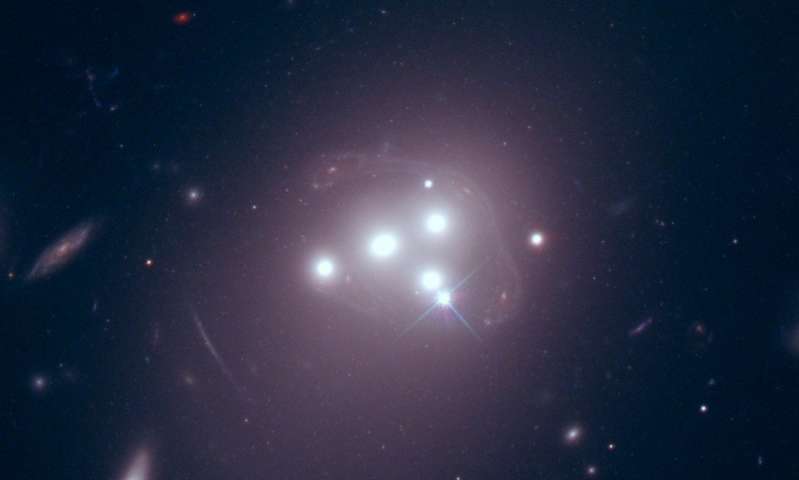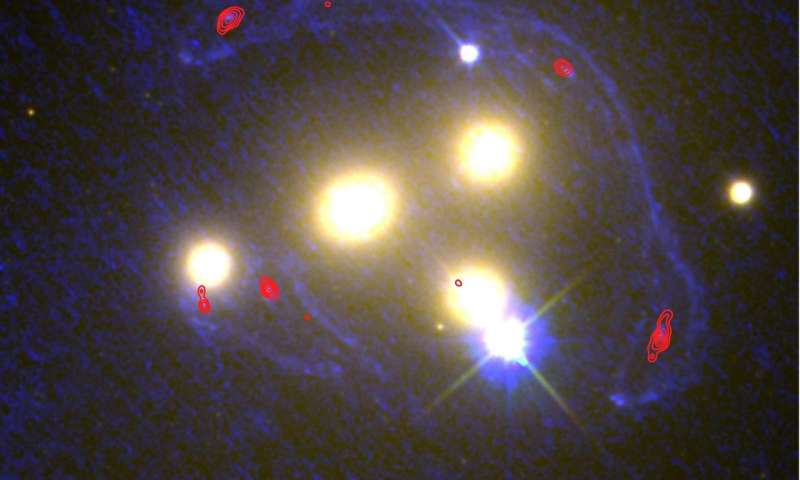
Scientists say there’s five times more dark matter than all known matter but, despite its ubiquity, nobody knows what dark matter really is or how it works. According to a new study, dark matter might be even more elusive than we thought. Speaking at the European Week of Astronomy and Space Science in Liverpool, Dr. Andrew Robertson of Durham University said that his work suggests dark matter doesn’t interact with anything other than gravity.
Left in the dark
Three years ago, Robertson and colleagues were on the verge of a breakthrough in what could have been the first identification of dark matter. Their observations using the Hubble Space Telescope appeared to show that the Abell 3827 cluster, which is about 1.3 billion light-years away from Earth, had separated from the dark matter surrounding it. This could have only happened if dark matter interacted with forces other than gravity — and it would’ve been incredibly important in elucidating the nature of dark matter due to the new clues it could have offered.
“So long as dark matter doesn’t interact with the Universe around it, we are having a hard time working out what it is,” Robertson said in a statement.
However, fresh observations performed by the same group now suggest that dark matter in the Abell 3827 cluster has not separated from its galaxy after all. The conclusion came after the researchers analyzed distorted infrared light from an unrelated background galaxy, which showed the location of the dark matter that had remained unidentified in the previous study. The observations were enabled by the Atacama Large Millimetre Array (ALMA) in Chile, South America.

The researchers say that while the new results indicate that dark matter is staying within its galaxy, this does not necessarily mean that dark matter does not interact with anything. Instead, it could be that the dark matter interacts very little. Alternatively, this particularly galaxy might be moving straight towards us, which implies we would not expect to see its dark matter displaced sideways.
“The search for dark matter is frustrating, but that’s science. When data improves, the conclusions can change,” said Dr. Richard Massey, in the Centre for Extragalactic Astronomy, at Durham University.
Robertson and colleagues will keep looking for the right opportunities and angles in order to probe the nature of dark matter in greater detail than ever. Over the years, the group at Durham has simulated various non-standard dark matter theories using high-powered supercomputers. One interesting theory that the researchers plan to investigate is whether dark matter interactions make clumps of dark matter more spherical. They will have this opportunity once the SuperBIT telescope will be deployed, which gets a clear view by rising above the Earth’s atmosphere under a giant helium balloon.
Scientific reference: “Dark matter dynamics in Abell 3827: new data consistent with standard Cold Dark Matter”, R. Massey et al., Monthly Notices of the Royal Astronomical Society, in press.






